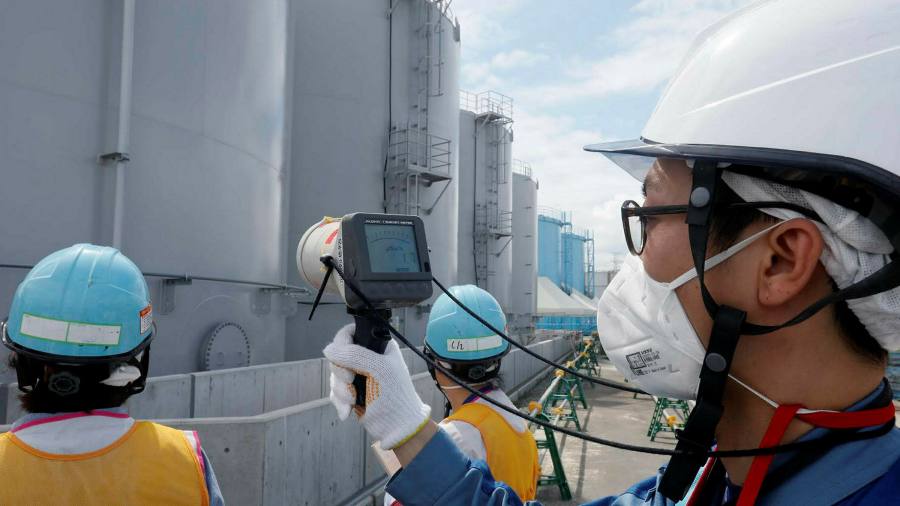[ad_1]
Ten years after an earthquake and tsunami unleashed a triple meltdown at the Fukushima nuclear power plant, Japan is still wrestling with the consequences of the world’s worst nuclear disaster after Chernobyl.
Some 40,000 of the 160,000 people evacuated are still unable to return to their homes. There is no credible plan for dealing with the highly radioactive material buried in the plant’s mangled interior. Only nine of Japan’s 54 reactors in operation before the disaster are working and its low-carbon energy targets are in tatters. The bill for dealing with the disaster and its aftermath is estimated at $740bn.
Meltdown is a meticulous attempt by Yoichi Funabashi, one of Japan’s most distinguished journalists, to recreate what happened. He describes his technique as “seizing the truth while it’s hotâ€, which means, in this case, conducting interviews with more than 300 protagonists before their memories fade. The result is a deliberately raw and rough-edged account to stand against any single official narrative shorn of friction. Almost inevitably, Funabashi invokes Rashomon, the classic film by Akira Kurosawa in which witnesses to a gruesome crime relate competing narratives.
The result in Meltdown is a tense thriller, although the almost minute-by-minute account, peppered with technical jargon and related over more than 600 pages, will be a slog for some readers. Still, for any future director hoping to match Chernobyl, the 2019 HBO television drama, Meltdown will be indispensable source material.
Funabashi recreates dialogue, and even italicised internal monologues, as his protagonists grapple with confusion and fear. Nuclear technicians are plunged into darkness, manuals are read by torchlight, temperatures rise and meltdown threatens. In one incident, Naoto Kan, then prime minister, insists on flying to the plant by helicopter even though there is an imminent danger of an explosion. So detailed is the account that we learn he eats a rice ball on the way back without washing his hands.
Kan wants to meet Masao Yoshida, the plant superintendent and in some ways the hero of the book. Yoshida, half irritated that Kan should be wasting his time at such a critical moment, tells the prime minister of his plan to start venting one of the reactors manually. “Radiation levels are extremely high. So, the operators can only go in for 15 minutes at a time,†he says, without mincing his words. “We’ll do it with a suicide squad.â€
Funabashi eschews the temptation to blame the disaster on the failings of Japanese culture — the default position of many commentators. Though rooted in specific flaws of Japan’s postwar nuclear-industrial complex, the Fukushima disaster cannot be glibly pinned on Japanese traits such as deference to hierarchy. Indeed, Yoshida defies orders by filling one of the reactors with seawater, a decision that probably averted even worse disaster.
Instead, in Funabashi’s view, at the heart of Japan’s fumbled response lies what he calls the “safety myth†promulgated by “the nuclear villageâ€, as those who run and regulate the industry are contemptuously known. Because Japan’s population, traumatised by two atomic bombs, was deeply suspicious of nuclear power, those running the industry insisted on its absolute safety. As a result, there was little in the way of contingency planning for accidents that, by definition, could never happen.
At Fukushima, there was an even more basic problem. The back-up generators were located in a basement. When the tsunami came rushing in, power was knocked out. With no way of cooling the reactor rods, catastrophe beckoned.
One of the motivations for writing the book was what Funabashi calls a study in “the struggle of individuals to overcome the crisisâ€. As disaster struck, Kan, an engineer by training, had been facing a campaign-finance scandal. Although his hands-on style injected a sense of urgency, Funabashi portrays the prime minister as an erratic micromanager bent on using the disaster to re-establish his leadership credentials. If that was his intention, he failed. Six months later he was gone.
The most interesting character is perhaps Yoshida himself, who died in 2013 of a (probably) unrelated cancer. A devout Buddhist, he led the workers who stayed behind, known as the “Fukushima 50â€.
Yet even a man of Yoshida’s qualities proved no match for the forces of nature and physics or the flaws of a system in which — despite his defiance — he was ultimately a cog. At one point, Yoshida calls the prime minister’s office to explain he has run out of options. “I’m sorry,†he says. “We may be finished.â€
Meltdown: Inside the Fukushima Nuclear Crisis, by Yoichi Funabashi, Brookings Institution Press, $31.95, 622 pages
[ad_2]
Source link







